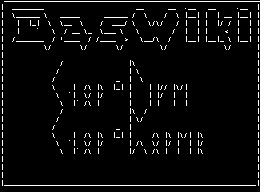- Das Wiki
- zsh.md
- zoneminder.md
- yubikey.md
- yasnippet.md
- xprofile.md
- xmonad.md
- wpa_supplicant.md
- wp3.md
- windows.md
Menu (Edit):
Link List (Edit):
# ____ _____ _ _
# | _ \ _____ __ |_ _|__ ___ | (_)_ __ __ _
# | | | |/ _ \ \ / / | |/ _ \ / _ \| | | '_ \ / _` |
# | |_| | __/\ V / | | (_) | (_) | | | | | | (_| |
# |____/ \___| \_/ |_|\___/ \___/|_|_|_| |_|\__, |
# |___/
Dev Tooling
Not your normal set of tools.
The Wax Philosophical
A less wise version of myself would have scoffed at the concept of dev tooling, and labeled it as unnecessary fluff or superfluous conveniences. Now that I have come into to wisdom, these conveniences aid in an often forgotten principle we cherish, uniformity. Programming is not as much a science as it is a form of artistic expression. The ability to uniformly create is what smoothes the lines and removes distractions from the focal point of one’s creation.
Intro
Development tooling, often referred to as simply “tooling”, are applications and/or scripts that aid programmers with their workflow and ease tasks such as creating documentation, maintaining standards, and keeping consistent styling.
List of Tools
Commitizen
Commitizen is compatible with all programming languages because it integrates and is focused on git commit
messages and git tags. There is a less involved version available, which one can install with NPM called
git-cz. Regardless, Commitizen is usally installed as a python package, and is integrated on a per
repository basis. What it does is provide a rather convenient dialogue to maintain the
conventional commit standard. This standard effects versioning as well as
commit messages.
Pre-Commit
Pre-commit is another development that integrates with git and primarily is focused on the execution of git hooks. Mainly the hook that is run before changes are commited to git. It is mostly used to run linters before commiting the code.
Husky
Husky is similar to pre-commit, in that it works with Git’s native hooks, except that Husky is purposefully tuned to work with Node.js. Husky possesses a much smaller footprint than pre-commit, and in many ways is both more flexible and extensible. It can handle processing both Node.js scripts and shell scripts, which provides an easy user experience.
Bump-My-Version
BMV is used to quickly make modifications and manage software versioning. It is a more full featured of “git bump”, and it is also configured and initialized per repository.
Creating a fresh config
bump-my-version sample-config --no-prompt --destination .bumpversion.toml
Scriv
Scriv is new to us, as in fifteen minutes ago, but it claims to provide a means to generate and manage changelogs which is another one of the many forms of documentation developers are supposed to provide.
Scriv could be nice, but isn’t very reasonable to use. It does not use standard formatting for generation of changelogs. Changelogs are not a unified document, but rather directory of changelogs where each entry is a seperate file. Furthermore, in order to change this formatting one has to know Jinja templating, which is unnecessary, and should be something more universal and common.
Configuration
As with most dev tooling, configuration is performed per repository basis. Scriv looks for configuration
values in four places; setup.cfg, tox.ini, pyproject.toml, and scriv.ini. If none of these files are
found it simply uses it’s default values. There are two or three environmental variables that can be managed
in the git config.
Usage
Scriv manages changelogs with four commands; create, collect, github-release,
and print. Using create will generate a new entry file in the changelog.d directory. Executing collect
with compile all of the entry files into a unified document.
 Anoduck's Das Wiki
Anoduck's Das Wiki